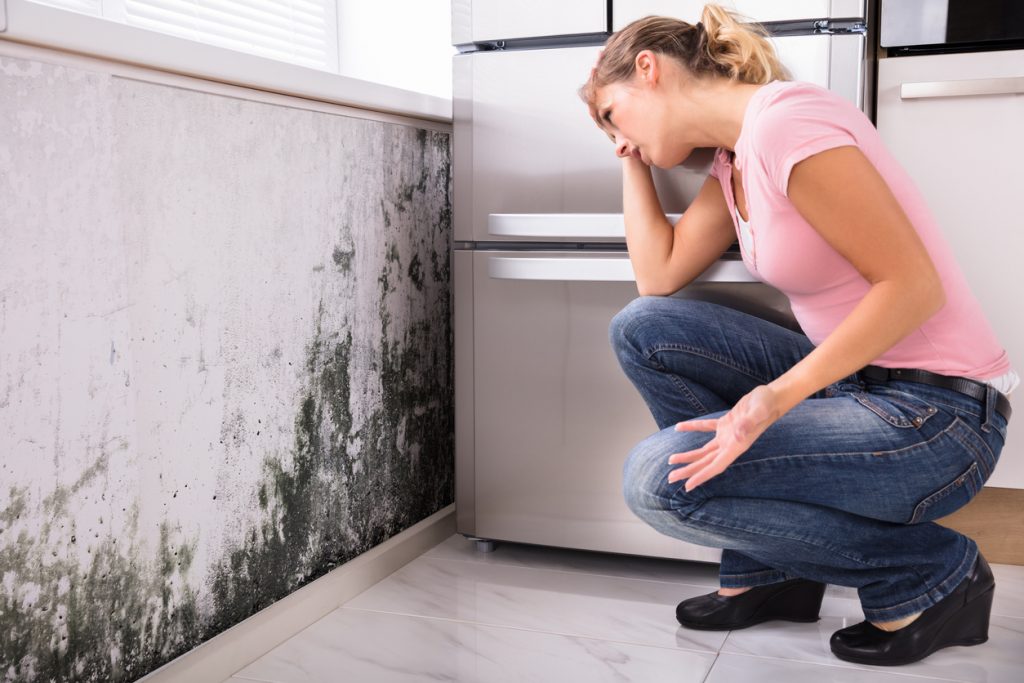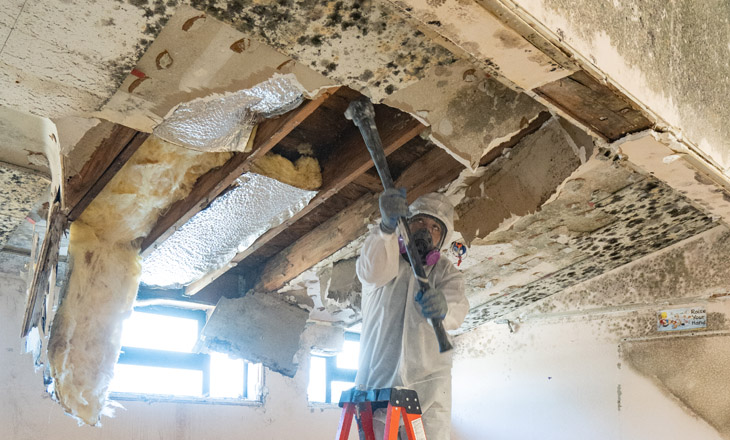Reliable Mold Removal Techniques to Eliminate Mold Contamination in Your Property
Mold contamination is a common concern that home proprietors face, commonly leading to health worries and residential or commercial property damages if not resolved quickly and properly. By understanding the crucial approaches for eliminating mold and mildew, home proprietors can take proactive steps to guarantee a healthy and risk-free living atmosphere.
Determining Mold And Mildew Resources

One key technique for identifying mold and mildew sources is performing a visual evaluation. This involves very carefully inspecting all areas of the home, consisting of covert rooms like behind wall surfaces and under floor covering. Wetness meters and thermal imaging cams can likewise be made use of to identify hidden water leaks or dampness pockets that could be advertising mold and mildew development.
In addition, air tasting can help identify mold and mildew resources by detecting raised mold and mildew spore degrees airborne. By attending to the origin and identifying reason for mold and mildew development, remediation efforts can be much more targeted and eventually much more successful in eliminating the mold and mildew contamination.
Correct Ventilation Strategies
Efficient mold and mildew removal not just depends on determining mold sources yet also stresses the relevance of applying appropriate ventilation strategies to prevent future mold and mildew growth (local mold remediation philadelphia). Appropriate air flow plays a critical role in controlling interior humidity degrees, which subsequently aids to discourage mold and mildew spores from growing in moist environments. By ensuring good air flow throughout the home, excess dampness can be decreased, thus producing an environment much less for mold and mildew growth
One reliable ventilation technique is using exhaust fans in moisture-prone areas such as washrooms, kitchens, and laundry areas. These fans assist to get rid of humid air and avoid it from collecting on surfaces. Furthermore, opening up doors and home windows when climate permits can also aid in boosting air flow and minimizing wetness levels inside.
It is very important to resolve any type of air flow issues without delay to maintain a healthy and balanced indoor environment and stop mold contamination. Routine upkeep of air flow systems, such as cleansing filters and air ducts, is crucial to make sure ideal airflow and avoid the build-up of dampness that could bring about mold development.
Effective Disinfecting and cleaning up
To ensure extensive mold remediation, thorough cleansing and disinfecting methods should be rigorously executed. Mold spores can spread rapidly otherwise appropriately cleaned up and decontaminated, bring about recurring mold and mildew growth and prospective health dangers. When taking on mold and mildew contamination, it is crucial to start by getting rid of any noticeable mold and mildew growth using ideal cleansing options and methods. Non-porous materials can often be cleaned up successfully with industrial mold and mildew cleaners or a combination of water and cleaning agent. However, porous products might require even more intensive cleaning approaches and even replacement if the mold and mildew has deeply passed through the surface area.
After the physical removal of mold, disinfecting the affected locations is essential to eliminate any kind of remaining mold spores and protect against regrowth. Normal cleansing and a knockout post sanitizing methods can help maintain a mold-free environment and secure the health and wellness of passengers in the building.
Encapsulation and Sealing

Encapsulation and securing are vital methods in mold and mildew removal tasks to avoid the reoccurrence of mold and mildew development. Encapsulation involves the application of a specialized sealant over surfaces influenced by mold and mildew. This sealant serves as an obstacle, enveloping the mold and mildew spores and preventing them from ending up being airborne and spreading out to various other locations. By encapsulating the mold and mildew, it efficiently seals the mold-infested surfaces, hindering additional development and decreasing the danger of exposure to unsafe mold bits.
Securing, on the various other hand, focuses on resolving locations susceptible to moisture invasion or where mold has actually previously developed. By sealing splits, holes, and spaces in wall surfaces, floors, or ceilings, the entry factors for dampness and mold spores are reduced, creating an environment much less for mold growth. This approach not just stops the spread of mold yet likewise helps in regulating moisture levels within the home, further discouraging mold and mildew advancement. When encapsulation and sealing are performed properly as component of a comprehensive mold removal strategy, they substantially add to making certain a mold-free and healthy and balanced interior setting.
Tracking and Avoidance
In maintaining a mold-free atmosphere post-encapsulation and securing, complete tracking and avoidance strategies play a critical role in making certain long-lasting effectiveness. Routine examinations are important to find any signs of mold and mildew resurgence or new growth without delay. These inspections ought to include not just formerly affected areas but likewise other at risk spaces prone to moisture build-up.
Checking moisture degrees is vital in mold prevention. Keeping indoor humidity below 60% can considerably impede mold and mildew you can try this out development. Using dehumidifiers in moist locations, such as bathrooms and basements, can help in preserving ideal humidity levels. Proper ventilation, consisting of making use of exhaust followers in cooking areas and restrooms, is likewise important in decreasing moisture and avoiding mold and mildew development.
Moreover, informing passengers on mold avoidance methods, such as quickly fixing leakages, improving air blood circulation, and attending to condensation problems, is crucial. Urging tidiness and prompt removal of any kind of water-damaged materials can better prevent mold problems. By executing a thorough tracking and avoidance plan, building proprietors can effectively guard their spaces versus mold contamination.
Final Thought
To conclude, effective mold remediation techniques are essential in removing mold contamination in buildings. By determining mold and mildew sources, carrying out appropriate air flow techniques, making use of effective cleaning and decontaminating techniques, securing and encapsulating impacted locations, and continually monitoring and protecting against future mold growth, homeowner can effectively remove mold issues. It is crucial to resolve mold contamination quickly to preserve a healthy indoor environment and avoid additional damages.
Reliable mold removal not just counts on recognizing mold and mildew resources but likewise highlights the value of applying appropriate air flow techniques to protect against future mold and mildew development. When taking on mold and mildew contamination, it is critical to begin by removing any visible mold development making use of ideal cleansing solutions and methods.Encapsulation and securing are vital techniques in mold remediation jobs to protect against the recurrence of mold growth. By securing off fractures, gaps, and spaces in walls, floorings, or ceilings, the access factors for wetness and mold and mildew spores are lessened, producing an atmosphere less helpful to mold and mildew growth. By identifying mold resources, carrying go to the website out appropriate ventilation strategies, utilizing efficient cleaning and decontaminating techniques, encapsulating and securing influenced locations, and continually surveillance and preventing future mold growth, residential property owners can effectively get rid of mold problems.